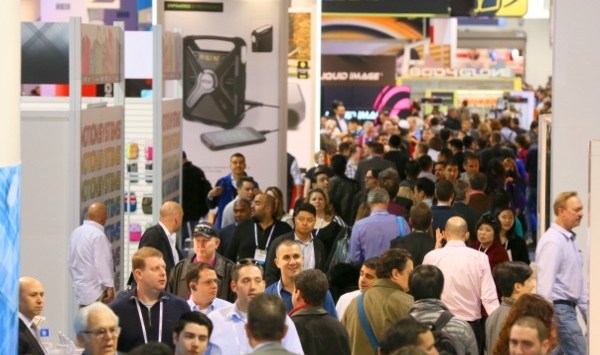

The lead up to Christmas is one of the busiest times of the year for the tech sector.
As I discussed late last year, there’s a very good reason why Apple tends to make its biggest product announcements of the year in September or October.
But now that January has rolled around, is it time for everyone to take a holiday? Not quite.
Indeed, arguably one of the most important annual trade shows is taking place right now in Las Vegas. The International CES – originally the Consumer Electronics Show – is where buyers from the world’s largest retailers go shopping for tech gadgets.
Last year the convention, which takes place at the Mandalay Bay Hotel and Casino, attracted 160,498 attendees, including 40,828 from overseas. In total, 6575 media professionals reported on 3673 exhibits that were spread out across 2.06 million square feet of convention centre floor.
Not surprisingly, all the hardware makers compete to stand out from the crowd, and thus you end up with big exhibits and bigger keynote product announcements for the year ahead.
Over the years, a number of tech gadgets that went on to become household appliances were first demonstrated at CES. These have included VCRs, laserdiscs, camcorders, CD players, mini discs, plasma TVs, OLED TVs, wearables and 3D printers.
No sooner does the dust settle in Las Vegas than the largest trade show in the telecommunications industry kicks off in Barcelona. The Mobile World Congress, which will run from March 3 to 5 this year, is where the world’s mobile phone carriers come to decide which phones they’re going to pick up for the year ahead.
Because Apple tends to announce new iPhones late in the year, a lot of other mobile phone manufacturers run a counter-cycle and make their biggest product announcements at MWC.
Last year, for example, Samsung unveiled its flagship Galaxy S5 smartphone at MWC once the hype from the previous iPhone had died down. Then later in the year, at a European trade show called IFA, it revealed a few devices (including the Note 4, Note Edge and Gear VR) it hoped would take some of the sparkle off the iPhone 6.
Telstra’s big Christmas present
Of course this year, especially for the millions of Australians who (either directly, through a super fund or an SMSF) hold shares in Telstra, there’s already been another big story brewing.
As I discussed last year (here and here), under chief executive David Thodey, Telstra is busy transforming itself from being Australia’s largest telco into being a cloud services provider (including networks and data centres) spanning the Asia Pacific region.
Now, if you asked most people who Telstra’s biggest competitors are, they’d probably mention Optus, Vodafone, TPG or iiNet. Yet under Thodey’s strategy, Telstra is positioning itself to become a rival to cloud services such as Amazon AWS, Google Cloud and Microsoft Azure, especially across Southeast Asia.
Over Christmas Telstra took another massive step in that direction with its takeover of a company called Pacnet.
At the heart of Pacnet is a vast undersea cable network called EAC-C2C that has 21 landing stations in total, linking Singapore, Hong Kong, China, Taiwan, the Philippines, South Korea, Japan and Vietnam. It also controls two of the five fibre pairs on the Unity trans-Pacific submarine cable network connecting Japan to the United States.
These undersea cables, in turn, connect Pacnet’s 29 data centres in 17 cities across the Asia-Pacific region. It also includes a stake in its China joint venture, PBS, which is licensed to operate a domestic Internet Protocol Virtual Private Network and provide data centre services in most major provinces in China.
Add Telstra’s existing undersea cables, such as Endeavour (which runs from Sydney to Hawaii), as well as its Australian data centres, and you’re starting to talk about serious capacity to deliver cloud computing and storage services across the region.
When you add in Telkom Indonesia’s deal to resell Telstra’s cloud services in Indonesia, as well as Telstra’s partnership on Cisco’s global cloud computing network, plus the NBN deal, it becomes a company well on its way to achieving that cloud-based vision.
It seems, from big keynote speeches at CES or MWC to connecting large enterprises in our own back yard, there’s no rest over summer for the tech sector.


COMMENTS
SmartCompany is committed to hosting lively discussions. Help us keep the conversation useful, interesting and welcoming. We aim to publish comments quickly in the interest of promoting robust conversation, but we’re a small team and we deploy filters to protect against legal risk. Occasionally your comment may be held up while it is being reviewed, but we’re working as fast as we can to keep the conversation rolling.
The SmartCompany comment section is members-only content. Please subscribe to leave a comment.
The SmartCompany comment section is members-only content. Please login to leave a comment.